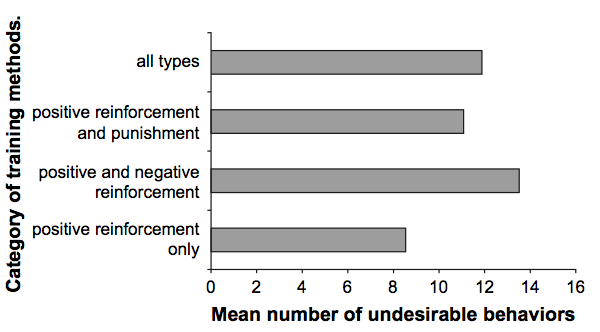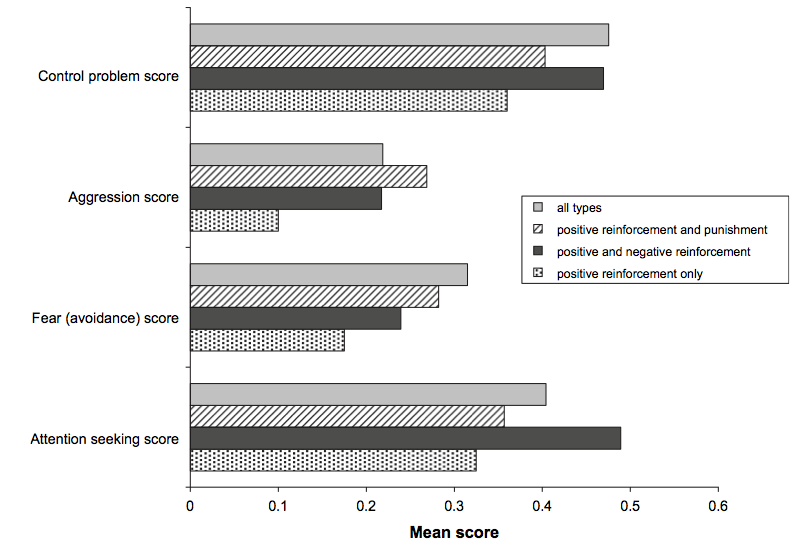Punishment-based training methods, especially those that incorporate aversive stimuli (i.e. training collars), have be shown that to increase the number of canine problematic behaviours: possibly because punishment creates a state of anxiety and/or conflict in the dog that is later expressed as a problematic behaviour (Arhant et al., 2010; Hiby et al., 2004; Blackwell et al., 2008; Rooney and Cowan, 2011).
Positive Reinforcement with Rewards
Hiby et al. (2004) found that dogs training exclusively used reward-based methods were reported to be significantly more obedient than those training using either punishment or a combination of reward and punishment. Please refer to this link for explanations on the different training methods. The use of positive reinforcement alone is significantly associated with a lower number of undesirable behaviours (Blackwell et al., 2008).
Below is a graph from Blackwell et al. (2008) study that shows the relationship between the category of training method and the mean number of undesirable behaviours shown by dogs.
As you can see this graph supports that the use of positive reinforcement alone is associated with a lower number of undesirable behaviours
Unlike dogs that are trained with methods that cause fear and stress, dogs with reward-based training are motivated to learn and have strong relationships with their owners (Rooney and Cowan 2011).
Below is a graph from Blackwell et al. (2008) study that shows the relationship between the categories of training used by owners and the mean score of undesirable behaviours.
As you can see there is a significant relationship between categories of training methods used by owners and the total number of undesirable behaviours shown by dogs. In all cases, use of positive reinforcement alone was associated with the lowest mean score
Based on the findings from the scientific literature, reward-based training is a more effective and welfare-compatible alternative to training collars.



